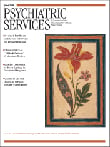Frontline Reports
Streets to Shelter in Chennai, India
The Banyan, a shelter for homeless women with mental illness in Chennai, India, was set up in an effort to restore hope and dignity to ignored and marginalized women. Chennai is one of the four largest cities in India, with an estimated population in excess of seven million. The Banyan serves as a sanctuary for these women and strives to make a difference through providing treatment and rehabilitation and helping residents reunite with their families. Over the past decade it has reached out to more than 1,500 women and has helped more than 850 find their way home. At any given time the program shelters more than 550 women.
The program was conceived by two young women who encountered a mentally ill woman on the street. Half naked, alone, unable to care for herself, and in desperate need of attention, she was denied help by health institutions. Similar encounters left the idealistic duo disillusioned, and they decided to do something themselves. The Banyan began in 1993 as a three-bedroom shelter for women with mental illness who had wandered from their homes and ended up living on the street.
Founded on the belief that every person is entitled to a life of dignity, the Banyan was registered as a trust later that year. Social marketing of the cause and lobbying to increase society's responsibility for people in need became important objectives. Efforts to involve all sections of society in a movement to ensure the rights of individuals with mental illness gained momentum. Media outlets and celebrities were enlisted to make the campaign highly visible.
With the rapid increase in the number of women seeking the services, it became imperative that the Banyan had a building of its own. Land was donated by the government, and after two years of fund raising, the dream became a reality. In 2001, a facility with 24,000 square feet of fully equipped, comfortable space was opened. Designed in two blocks—transit care and vocational training—the new facility includes consulting rooms, sick bays, an auditorium, medical and psychiatric isolation facilities, a geriatric ward, and a recreational therapy unit. Women are housed in the transit care home on admission and gradually moved to the vocational block, which operates in nearby building because of lack of space. The Banyan employs a staff of 106, which includes 35 health care assistants, 12 professionals (medical and psychiatric social workers, clinical psychologists, and occupational therapists) and three trained nurses. The medical team comprises three psychiatrists, a general physician, and a dermatologist.
The program uses a three-step approach. For crisis intervention, a rescue team provides immediate outreach when a report is received about a mentally ill woman on the street. Women are also brought to the facility by concerned volunteers or police. In the second step, women receive treatment and holistic care. Treatment is a mix of pharmacotherapy, alternative therapies, and positive reinforcement. The healing energies of dance, music, and art are harnessed. On average, women spend from three to six months in the program.
The third step is rehabilitation. The rehabilitation process includes ongoing pharmacotherapy, psychological sessions, group activities, assessment and training in activities of daily living, and vocational training. Psychological sessions include psychoeducation and cognitive-behavioral therapy. Groups are designed to facilitate freedom and ownership of the program; participants are encouraged to share their grievances and voice their opinions about the shelter environment and suggest ways to improve it. Teaching and practical training on aspects of daily living, such as personal hygiene, cooking, and domestic tasks, are provided. Vocational training works toward helping women gain employment and financial independence. Tailoring, weaving, handicrafts, printing, and further education are examples of some of the activities pursued.
After successful rehabilitation, the Banyan program provides a lifelong supply of free medication to ensure residents' continued health. The Banyan helps residents find and contact their family members. Women who live outside the city are linked to local psychiatric services or other nongovernmental organizations for ongoing assessment and distribution of medication.
The Banyan has set up a group home near the shelter. The unstaffed home currently houses nine women for whom integration with families has not worked for various reasons. The residents are gainfully employed and take care of their own day-to-day needs.
As the Banyan staff dealt with the immediate problem of destitute women with mental illness, they became aware of the unlimited need for mental health services. In response, the Banyan introduced free outpatient psychiatric consultation for former residents and for the public—women, men, and children. To decrease stigma, they also organize events, such as street theater and dance, to raise awareness about mental illness in areas where superstition and ostracism of people with mental illness are serious problems. Program staff have also worked with the courts to establish a legal aid clinic to ensure that the rights of individuals with mental illness are recognized and attended to.
To help strengthen the mental health system, the Banyan program created a network of advocacy organizations across India. The Banyan also advises partner organizations that replicate the model of care. Resources to operate the Banyan come from individual donations, corporations, and fund raising. Not long ago, mental illness and homelessness were problems that few people in India acknowledged. Today the local population is aware of these problems and of the need to provide solutions.



